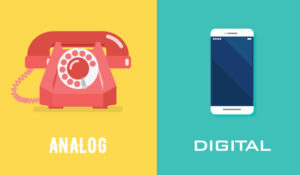Chip McCoy of Genesys shares his advice for implementing a new digital channel in the contact centre.
I was sitting on the couch working on an integration idea when my youngest son came downstairs, picked up the phone and dialled his friend who lives one block down the street. He simply asked, “Did you get my text?” and then hung up the phone.
I’ve observed this phenomenon for years across many age groups. I knew exactly what had just happened, but I was still annoyed when I asked my son why he didn’t just talk to his friend when he had him on the phone. He just shrugged unknowingly and ran back upstairs.
We live asynchronous lives, and we are growing more addicted to the power of choice that these asynchronous channels afford us. SMS, chat, and email are prime examples. LINE and WhatsApp form another group of available messaging apps. We fill in our “down time” with multiple, concurrent conversations for our own efficient purposes. And we expect the companies that we do business with to interact with us in the same way.
It’s a no-brainer when companies want to interface with customers across their preferred digital channels. For example, 52% of businesses already harness web chat, and 32% expect to expand to it in the next year. However, I’ve observed many mistakes in the gold rush to remain relevant in the market. Here are three factors to effectively adding a new channel.
Walking to School, Uphill—Both Ways
I remember my grandparents used to brag about how hard life was and how they had enough grit to overcome the challenges. Businesses, strangely, still feel compelled to make life harder than it needs to be.
In their zeal to adopt new customer digital channels like SMS, for example, a single decision maker will grab a hold of the fastest solution that gives them a sense of accomplishment. But consider the additional domain knowledge required of your existing staff to manage that new system. Just behind this on the pain scale is having to retrain someone to compile reports into a spreadsheet so that you can flip between tabs to give you insights on when and why customers are chatting—and when and why they’re texting across SMS.
This also means that agents are assigned for the sole purpose of texting because you can’t have them taking calls in one system and texting in another one—while chatting in another. Disparate systems don’t know how to coordinate customer demand volumes. The world is not perfect; I recognise we must make decisions with imperfect choices. Simply consider that, in the new world, managing multiple, siloed systems isn’t necessary.
Before expanding your customer digital channel support in an ad hoc fashion, consider the many solutions that unify those systems and coordinate all channel traffic volumes while also maximising agent availability for re-use across all channels. A unified system means you use one system language to describe all your channels and a single reporting system to give you an automated, holistic picture of customer behaviour.
Ain’t No Heroes Without R2D2
The heroes and heroines in Star Wars asked R2D2 to do several tasks, from carrying a secret message to finding the shield controller, to fixing a power converter—all so they could win the day. The nature of our culture is built around this concept: When machines talk more, customers win.
Artificial intelligence (AI) is the easiest example. Look at the exponential adoption of AI just over the last three years. And other technologies are emerging at various rates of adoption, such as augmented reality and blockchain interactions. Now think about how many systems need additional, siloed development to take advantage of an emerging technology. It’s a fool’s errand to build systems this way. The currency of the new world is shared integrations—where one system is designed to talk to any number of other systems.
Before investing in a new customer channel, be sure it has integration capabilities built in, much like having your own R2D2 that can interface with any number of future systems. Similarly, ensuring you have access to a growing framework of pre-built integrations lets you share the same capabilities across all channels. Harnessing a unified system for your channels provides greater benefit with far less work. For example, we can apply AI to a single ACD that’s routing all our interactions. And the fact that we didn’t know we wanted AI until just yesterday makes us more agile when we are positioned to build shared integrations to answer shifting market demands.
You Had Me at Hello
We’ve acknowledged the value of unified communications and the future-proofing power of solutions that support integrations. The last and most important consideration you need to make is how well you manage the human touch of voice.
Eighty-three percent of consumers say that voice is their preferred channel for support. When the customer-business relationship is going well, digital channels are perfect. But at some point, we all want the experience of human touch that voice delivers to resolve our more complex problems.
Further, as much as we romanticise the modern start-up, any company without voice access often is categorised as a “fly-by-night” operation. It’s no different than a company who uses Hotmail for their business email. My advice is to respect the long foundation of voice. Having voice access (and doing it well) makes you superior to your competitors who have loosened their respect for this foundational channel.
You also should be sure to unify your growth into asynchronous channels with your voice solution. With so much technology exploding around our ears, it’s a shame that companies still make their customers repeat themselves between email, chat and phone calls.
With quiet kindness, I say, “Stop the madness”. You will give yourself a false sense of differentiation when you keep your digital channels separate from your voice channel. And your customers will flock to your competitors who understand what they want and what they wanted across the entire customer journey. Treat voice and digital as a single conversation.
Adjusting to the Roaring 20s
The beginning of this decade has been mildly forgiving for businesses who sat on the fence—afraid of change or, understandably, uncertain about what will be the most effective channel investments. The world has shifted since then. We are moving at an exponential pace into a commodity-based economy. The market of the roaring 20s will not be so gentle.
I applaud businesses with the courage to shake off age-old systems to deliver more personalised customer experiences. It’s not easy. But by ensuring their new technology will unify all channels into a single customer journey, and by positioning themselves to take advantage of a vibrant integration framework, mature businesses become the new class of start-ups that everyone will idealise. In fact, we’ll all be calling our friends and asking them to read our text messages about you.
Author: Robyn Coppell
Published On: 31st Dec 2018 - Last modified: 8th Jan 2019
Read more about - Guest Blogs, Genesys








































